The Alocasia Amazonica Bambino is a striking houseplant it features long leaves with bright veining that are shaped similar to an arrowhead.
Alocasia Bambino is native to Southeast Asia. This plant is a dwarf variety of Alocasia and will only reach a height of around 12″ when kept indoors. With the proper care this is a fairly easy houseplant to successfully grow indoors.
This plant is happiest in an environment that mimics the humid and warm tropical environment that it is native to. Keep the humidity up past 70% for this plant. If you have a bright bathroom, the bambino will happily grow in there and love the humidity from the shower.
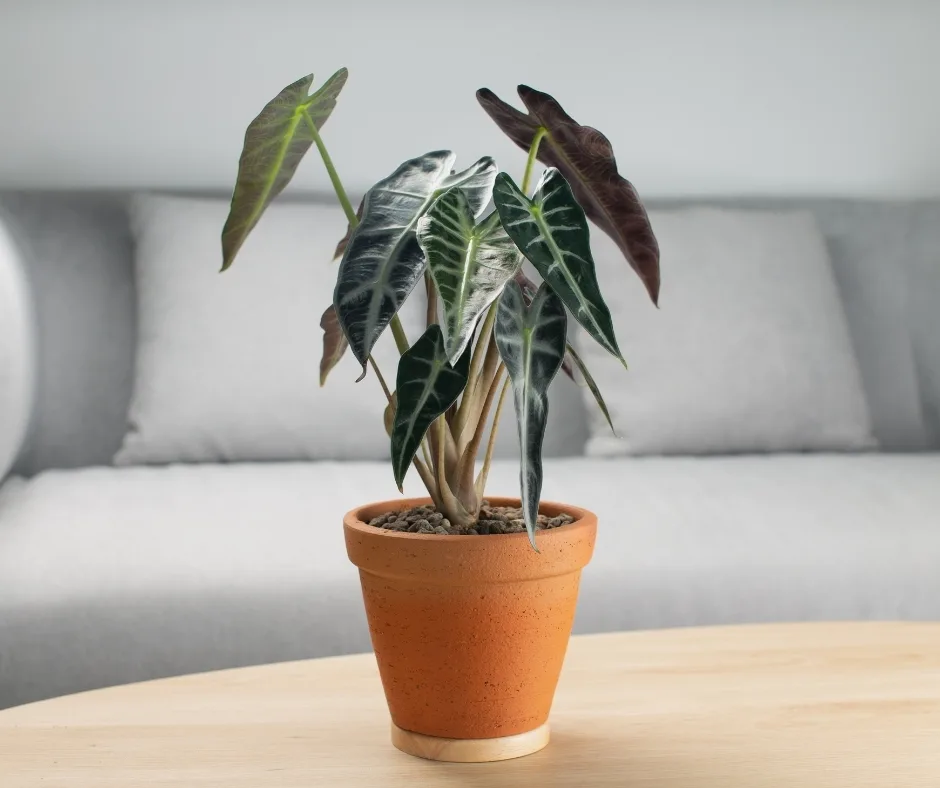
Alocasia’s while beautiful are not very hardy when it comes to resisting diseases and pests. When you purchase your Alocasia Bambino, carefully inspect the leaves for pests. With Alocasia’s it is a good idea to give the leaves a neem oil treatment and quarantine them away from your other plants for a couple of weeks.
Purchase Alocasia Bambino from Etsy
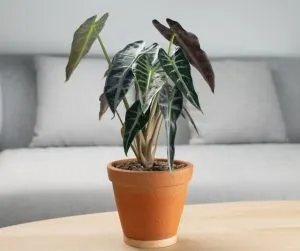
If you do find pests on your new baby plant, don’t panic! Usually pest problems can be remedied with a course of neem oil. You can help your plant resist pests by keeping the leaves clean and dust free at all times. It’s never a bad plan to take a peak at the leaves when you water your plant.
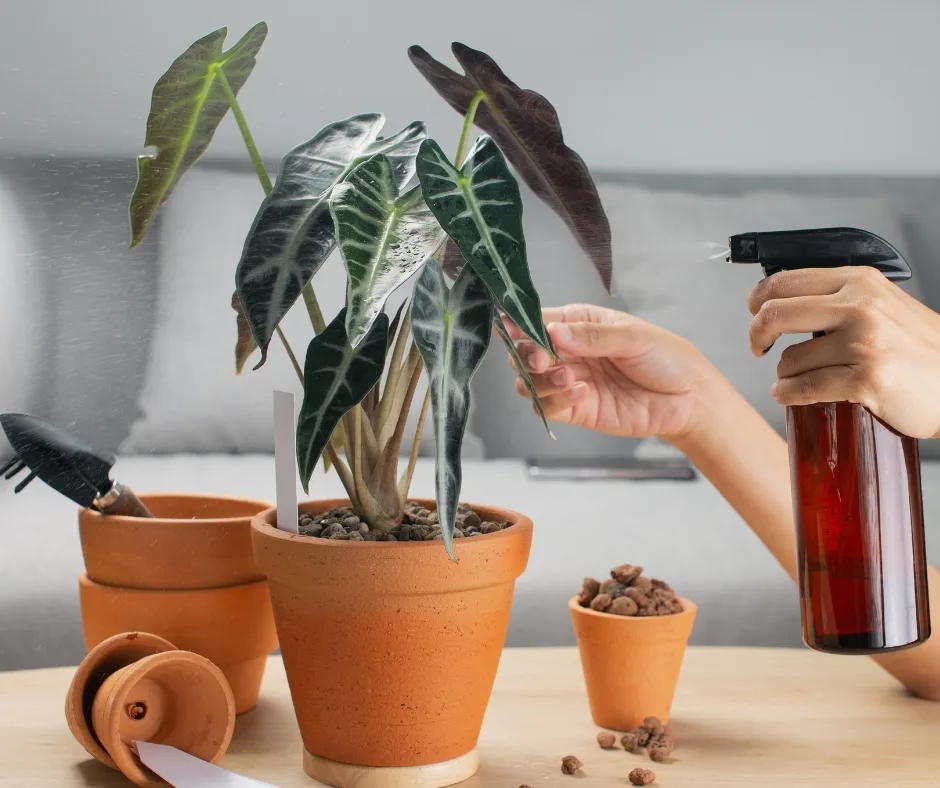
More Popular Houseplants:
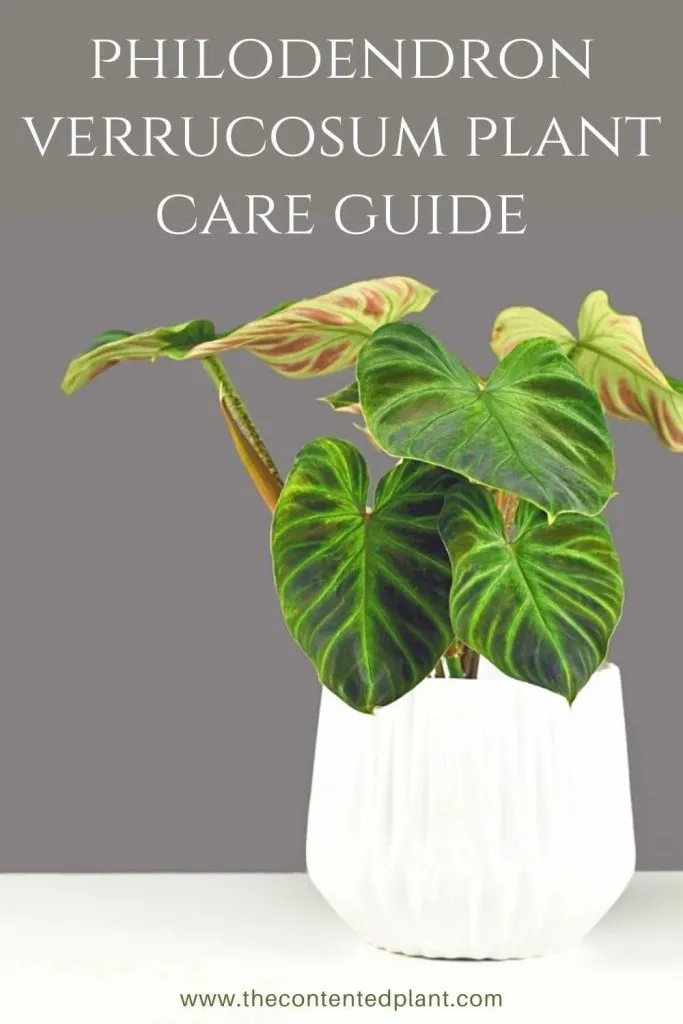
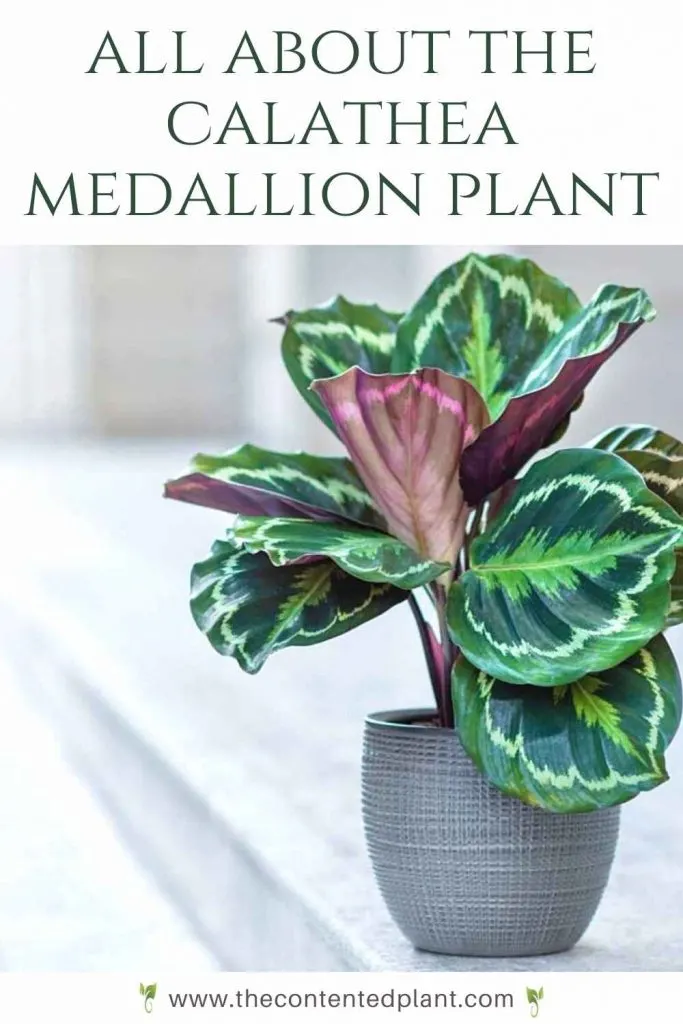
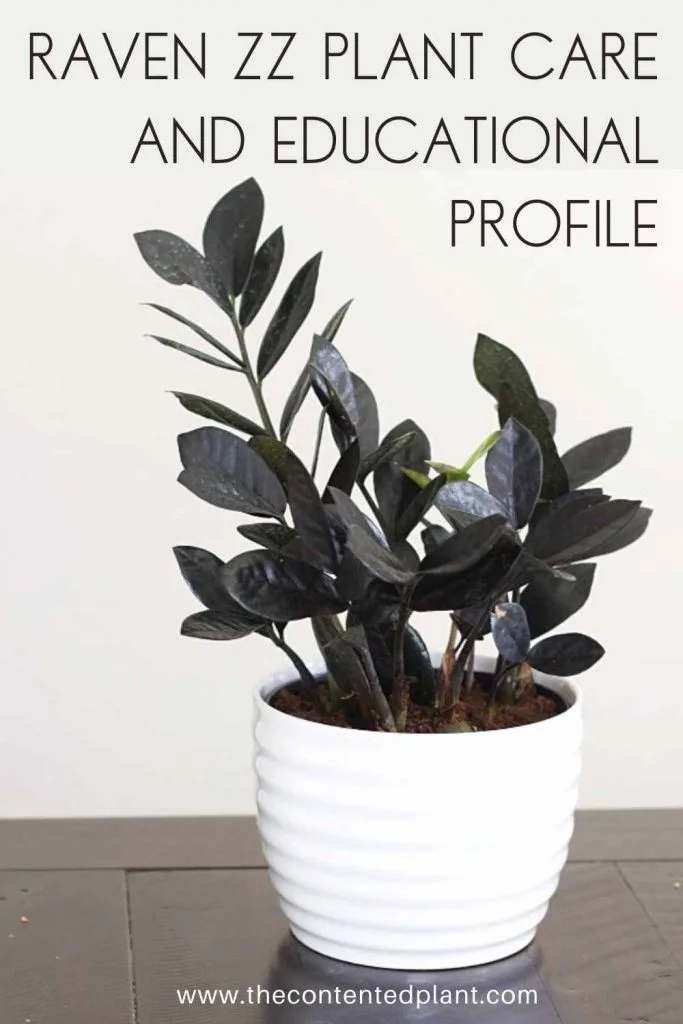
This is not a drought resistant plant and will not like to dry out between waterings. Try and keep the soil evenly moist and make sure you have it on a regular watering schedule. The soil needs to be loose and well draining. Compact soil mixtures will leave excess moisture sitting around the roots. This can quickly lead to root rot and have dire repercussions for the plant.
We have put together an easy to read printable care guide detailing all the steps you need to keep your Alocasia Bambino happy and healthy.
Alocasia Bambino Plant Care Guide
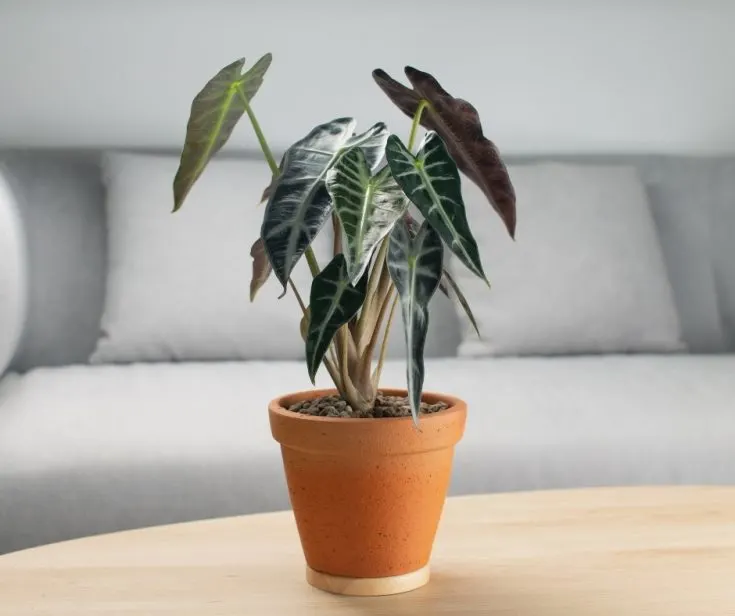
Alocasia Bambino plants are gorgeous with long arrowhead shaped leaves, bright veining, and a purple underside of the leaf.
This Care Guide will teach you how to keep this plant happy all through the year.
Tools
Instructions
Soil Preference:
- This plant requires a light well draining soil mix. bambinos need moist soil, but cannot have water compact around the roots.
- A mix of potting soil, succulent soil mix and orchid soil mix (look for one with a lot of peat and finer bark mix) will keep the roots happiest.
- Two parts potting soil to two parts succulent mix to two parts orchid bark.
- A heavy soil potting mix is not recommended for this plant.
Pot Size and Type:
- This plant is fairly slow growing and needs a pot only an inch or two above the previous pot size.
- Any NON porous well drained pot can be used. It MUST have a drainage hole. Terra cotta wicks away too much water from the soil and is not the best pot material for Alocasias
- Repot every second year or when roots come out the drainage holes on the pot bottom.
Lighting:
- Bambinos require bright indirect light
- Shield this plant from strong direct light in summer south and west sunny windows. The leaves will burn.
- Tip: Window sheers or blinds can offset some brief periods of high direct light.
Watering:
- Try a watering schedule of every week. Water thoroughly until the water runs out of the pot.
- Watering is best done on a regular schedule so the plant is not over or under watered. Both can cause stress on the plant.
- Never let this plant get wet feet. Alocasias enjoy moist soil but cannot tolerate heavy compacted wet soil. If the soil is compacted the bottom of the soil can remain wet which encourages root rot and fungus gnats.
Humidity:
- Alocasia bambinos need humidity. Set the container on a pebble tray with water under the pot or provide a humidifier to this tropical plant for best growth and happiness.
- Make sure you are not keeping your plant next to a heat or air vent. This will dramatically lower the humidity level.
How to Fertilize:
- Alocasias require regular fertilizing.
- Apply a good quality fertilizer (linked in materials) monthly through Spring and summer.
- Alternately you can use a slow release fertilizer at the beginning of the growing season.
- Decrease feedings by late Fall and allow the plant to rest through the winter months.
Temperature:
- Keep this plant at a low of 50 Degrees F. to upward of 85 Degrees F. It enjoys warmth and humidity.
Pests:
- Alocasias can be attacked by pests
- Stress by longterm overwatering, poor light, extreme temperatures and soil conditions are contributors to plant stress..
- Spider mites, mealy bugs, scale, thrips and whitefly are the most common houseplant pests you will see.
- Read our post on How to get rid of aphids and other pests with our homemade pesticide soap recipe or neems oil.
- To minimize the possibility of pests be sure to check all nursery plants before bringing them home.
- Quarantine all new plants until you are sure no pests live in them.
How to Propagate:
- This plant is easily propagated through rhizome division.
- Start with a healthy and mature Alocasia plant
- Divide the rhizomes when repotting the plant
- Plant new rhizome start into a pot with similar soil mix to the mother plant.
- Keep the soil moist while the new plant acclimates and matures
Toxicity:
1. This plant is considered toxic. Do not ingest any part of the plant. This plant can also cause mild skin irritation. Keep away from children and pets.
Follow Us:
Find us on YouTube, Instagram , Pinterest and TikTok! We love to Plant chat. We also comment, like and occasionally share your content to our daily stories. We’d love to see your plants. Share your joy in your houseplants. Happy Planting!
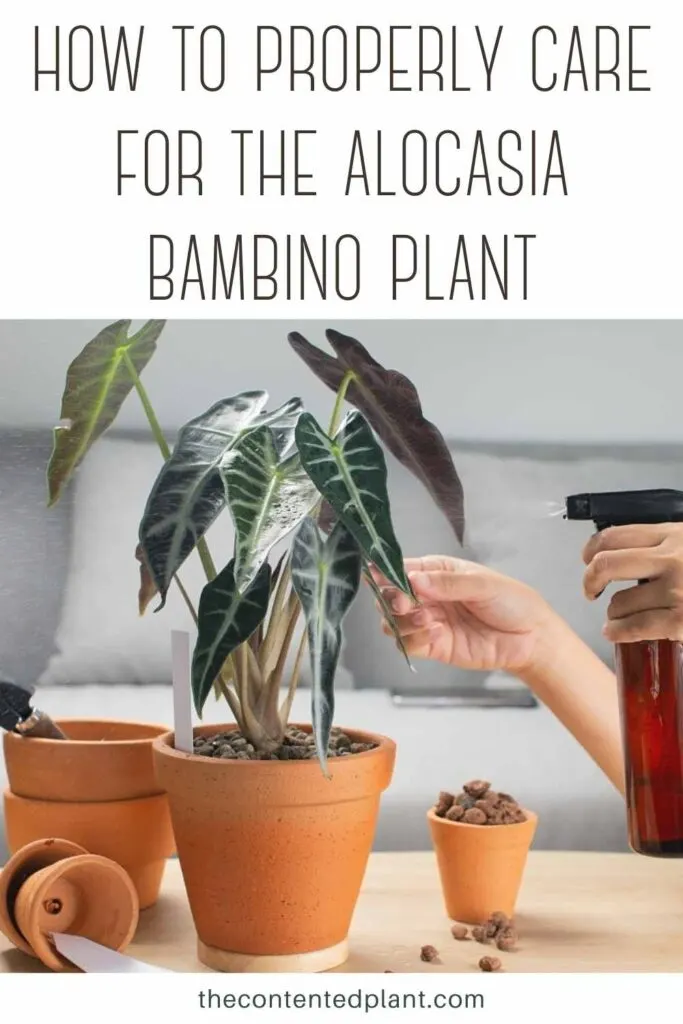
Learn more about the plant genus Alocasia

Alocasia Polly - The Contented Plant
Monday 27th of September 2021
[…] have the Alocasia Bambino and it has taught me what happens when I don’t pay attention. Brown tips on leaves, yellowing […]